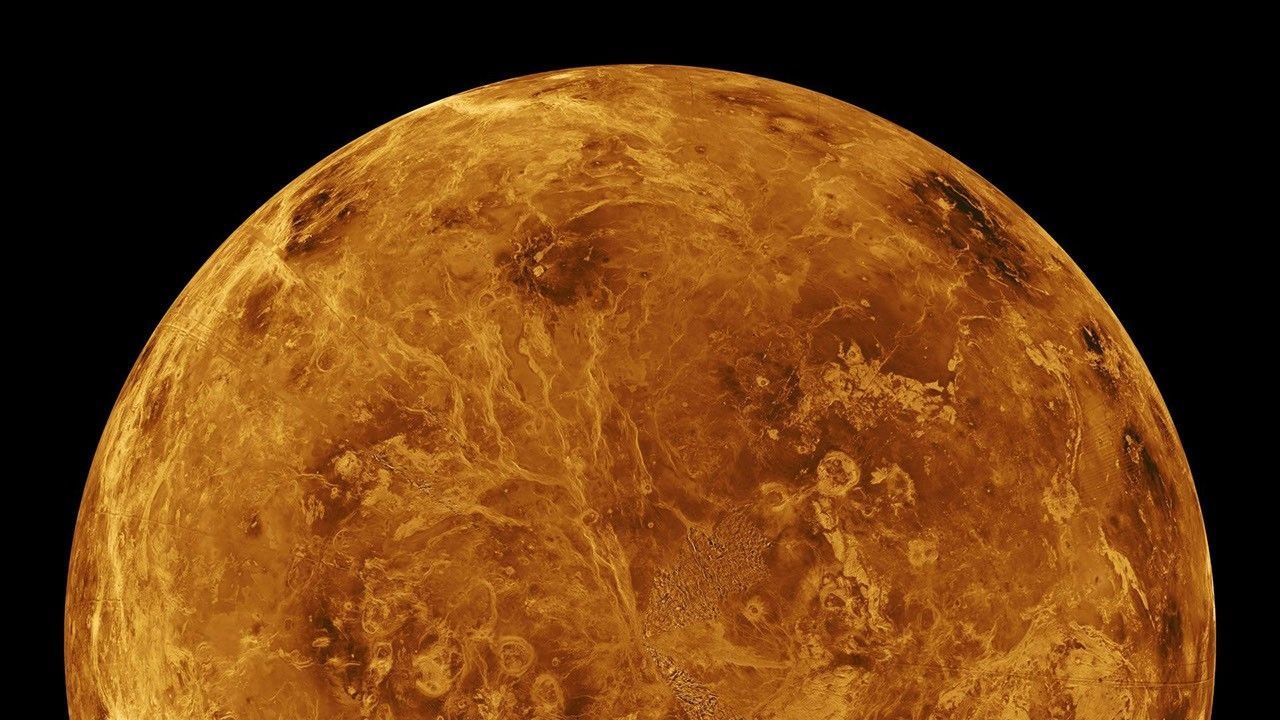Science
Scientists Unveil Explanation for Venus’ Mysterious Crown Features

A research team has proposed a new explanation for the enigmatic crown-like geological features on Venus, known as coronae. These formations, which number over 700 across the planet’s surface, may result from a phenomenon dubbed a “glass ceiling” in Venus’ mantle. This barrier is believed to trap heat and influence slow-moving currents, potentially leading to the creation of these unique geological structures.
According to the study, led by Madeleine Kerr, a doctoral candidate at the University of San Diego’s Scripps Institution of Oceanography, the findings provide critical insights into the origins of coronae. Kerr stated, “On Venus, there is a pattern that is telling us something. We think what we found is the key to unlocking the mystery of the origin of these coronae.”
Despite their similarities in size and distance from the sun, Venus and Earth have taken drastically different evolutionary paths. This divergence has resulted in distinct geological features, with coronae being a unique characteristic of Venus.
The research, published on September 16, 2023, in the journal PNAS, explores the formation of these structures. Scientists have categorized coronae based on size, noting that larger ones—over 310 miles (500 kilometers) in diameter—may form due to mantle plumes and various tectonic processes. In contrast, smaller coronae, averaging about 124 miles (200 kilometers)David Stegman, a professor of geosciences at the same institution, remarked, “The current state of knowledge of the planet Venus is analogous to the 1960’s pre-plate tectonic era.” He noted the absence of a comprehensive theory linking the heat transfer from the planet’s interior to its surface features.
The researchers suggest that a significant aspect of this geological puzzle is a layer of cold material that sinks from the surface, meeting hot materials rising from deeper layers at a depth of approximately 370 miles (600 kilometers). This area acts as a barrier, preventing most hot plumes from breaking through. Only the strongest plumes reach the surface, resulting in volcanic rises, while the trapped material beneath remains warm but does not melt.
“This layer of warm fluid trapped between 600 to 740 kilometers provides a global source of smaller-scale thermal instabilities,” the researchers explained in the study. Utilizing computational models, the team demonstrated how these smaller plumes could form organically, illustrating a natural origin for the initial conditions necessary for the coronae.
The study offers a fresh perspective by suggesting that as these secondary plumes rise and interact with Venus’ mantle, they could contribute to the formation of the diverse crown-shaped coronae observed. The models indicate that this mechanism may function efficiently when the mantle is between 250 to 400 kelvins hotter than Earth’s mantle, although the duration of such a state remains uncertain.
Despite these promising findings, the team acknowledges that further research is essential. Future studies will aim to model plume dynamics in three dimensions, consider melting both within the mantle and at the surface, and incorporate varying mantle compositions. These efforts will enhance understanding of how Venus’ internal heat and movements shape its coronae, volcanoes, and overall geological landscape.
In summary, the research offers a significant advancement in understanding the geological processes on Venus, potentially illuminating the intricate relationship between its mantle dynamics and surface features. As scientists continue to explore Venus, the findings may redefine our understanding of planetary evolution within our solar system.
-

 Technology5 months ago
Technology5 months agoDiscover the Top 10 Calorie Counting Apps of 2025
-

 Health2 months ago
Health2 months agoBella Hadid Shares Health Update After Treatment for Lyme Disease
-

 Health3 months ago
Health3 months agoErin Bates Shares Recovery Update Following Sepsis Complications
-

 Technology4 months ago
Technology4 months agoDiscover How to Reverse Image Search Using ChatGPT Effortlessly
-

 Technology1 month ago
Technology1 month agoDiscover 2025’s Top GPUs for Exceptional 4K Gaming Performance
-

 Technology2 months ago
Technology2 months agoElectric Moto Influencer Surronster Arrested in Tijuana
-

 Technology5 months ago
Technology5 months agoMeta Initiates $60B AI Data Center Expansion, Starting in Ohio
-

 Technology5 months ago
Technology5 months agoRecovering a Suspended TikTok Account: A Step-by-Step Guide
-

 Health4 months ago
Health4 months agoTested: Rab Firewall Mountain Jacket Survives Harsh Conditions
-

 Lifestyle5 months ago
Lifestyle5 months agoBelton Family Reunites After Daughter Survives Hill Country Floods
-

 Technology4 months ago
Technology4 months agoHarmonic Launches AI Chatbot App to Transform Mathematical Reasoning
-

 Technology3 months ago
Technology3 months agoUncovering the Top Five Most Challenging Motorcycles to Ride




















